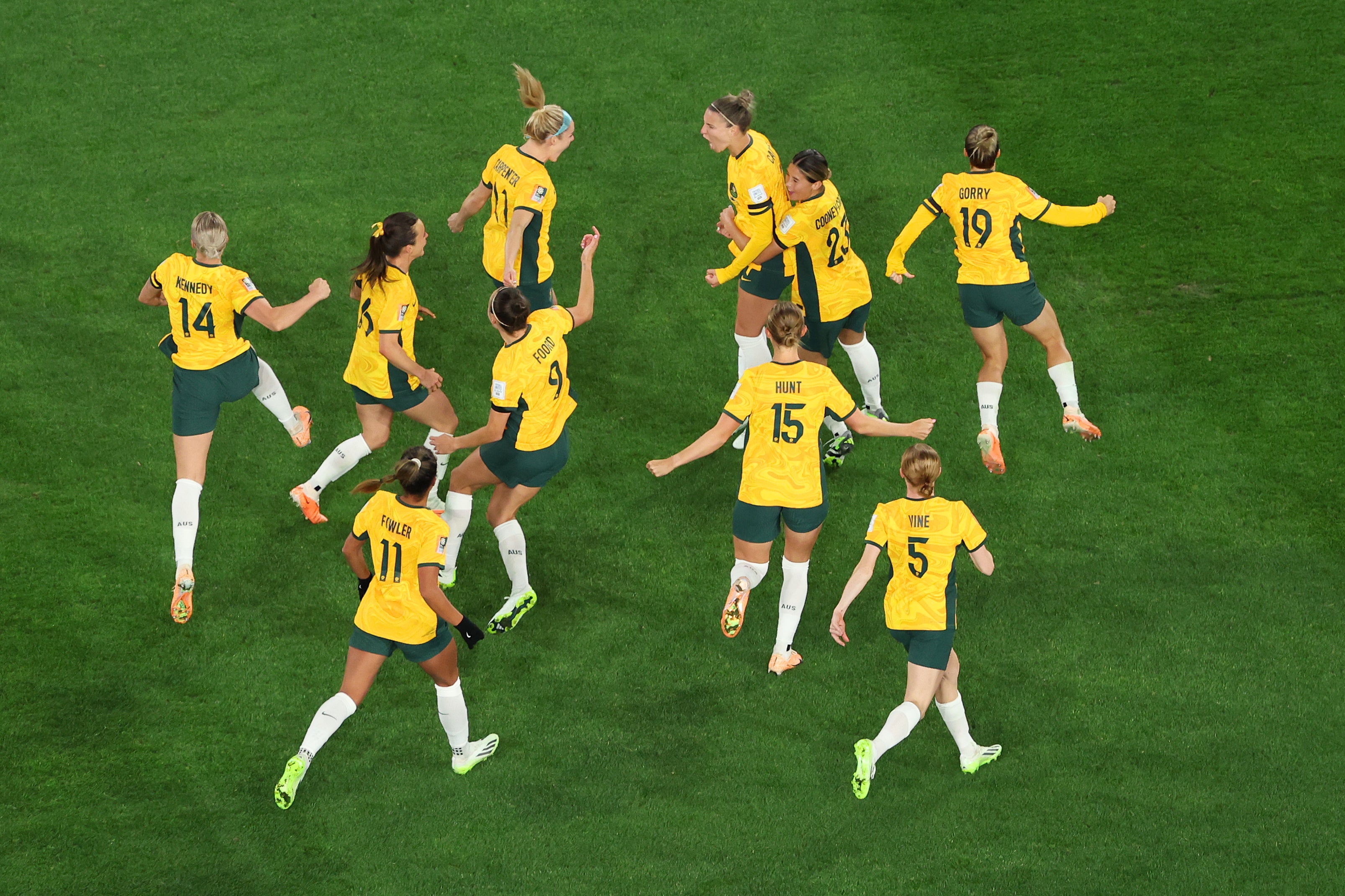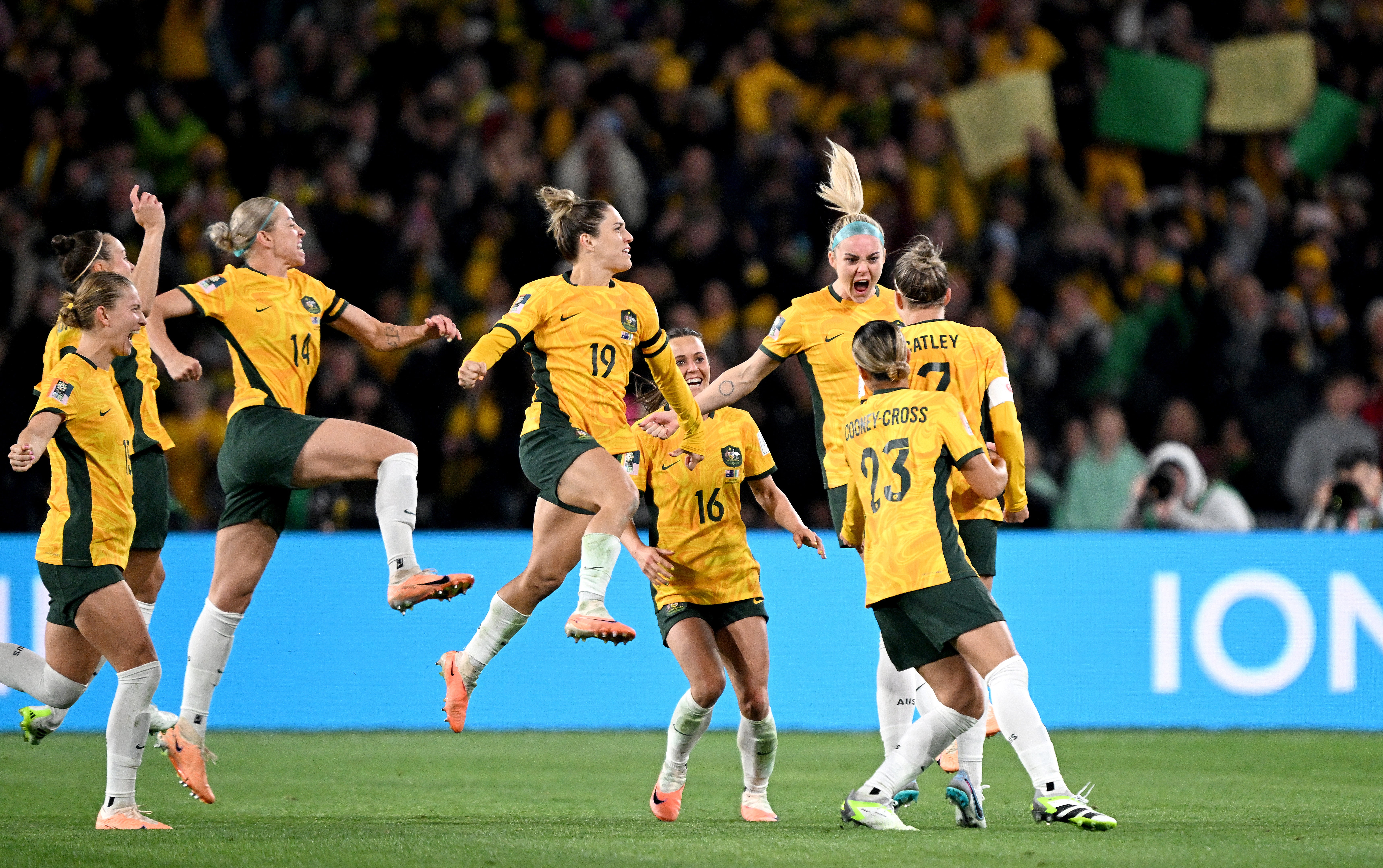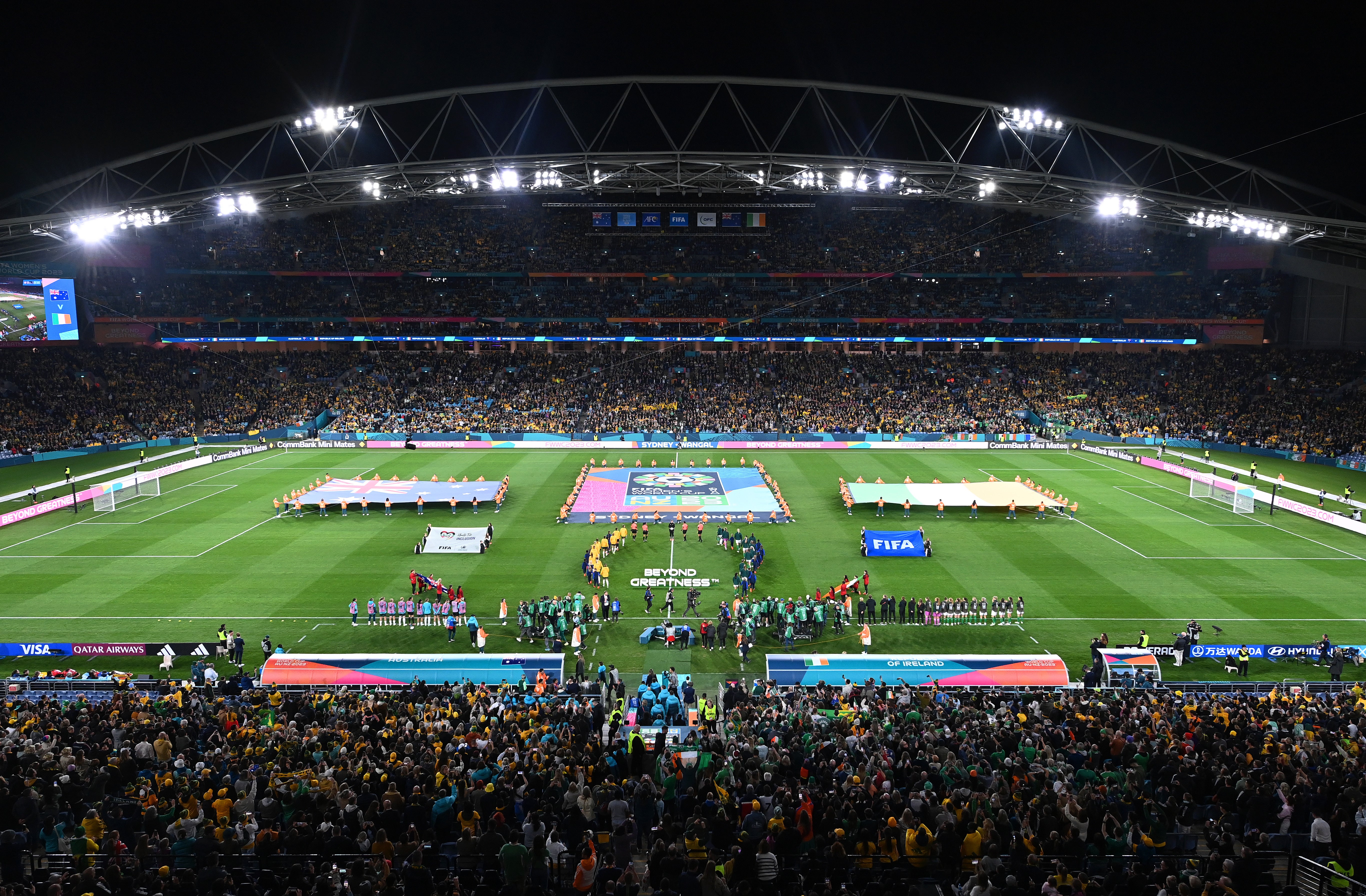Why Australia’s Women’s World Cup opener felt different
Australia edged past the Republic of Ireland in an occasion that demonstrated the sport’s growth and set the stage for the weeks ahead

Your support helps us to tell the story
From reproductive rights to climate change to Big Tech, The Independent is on the ground when the story is developing. Whether it's investigating the financials of Elon Musk's pro-Trump PAC or producing our latest documentary, 'The A Word', which shines a light on the American women fighting for reproductive rights, we know how important it is to parse out the facts from the messaging.
At such a critical moment in US history, we need reporters on the ground. Your donation allows us to keep sending journalists to speak to both sides of the story.
The Independent is trusted by Americans across the entire political spectrum. And unlike many other quality news outlets, we choose not to lock Americans out of our reporting and analysis with paywalls. We believe quality journalism should be available to everyone, paid for by those who can afford it.
Your support makes all the difference.Steph Catley stepped up to the penalty spot with her nation’s expectations on her shoulders. Star striker Sam Kerr had been forced to pull out with an injury and Australia had been unable to trouble the visitors’ goal. They couldn’t cope with the determination and hunger of a Republic of Ireland side eager to prove themselves on their first foray on the world stage and needed their moment of magic. It was her time to shine.
As she fired home, leaving Courtney Brosnan watching on as she dived in the wrong direction, she corrected Australia’s failures and set them on course for the World Cup they’d been hoping for. This is the perfect situation and they’ll feel capable of upsetting the established order.
Their opponents, Ireland, hadn’t been to a Women’s World Cup before. The increased size of this tournament to 32 teams in this edition, the emergence of a new generation of talent and improved backing from their national federation gave them the tools they needed for qualification.
And although Australia were by far the favourites Ireland made it clear that they wouldn’t play into any preconceptions of a gulf in class. They defended with structure and resolve and exuded confidence in their play as they left the hosts unable to find anything that even slightly resembled a way through.
It was an encounter of little opportunities and hard-fought battles, with Catley’s penalty the only time either team was able to score, but the events of the game itself are of little importance compared to the symbolism of this fixture and what it represents ahead of a tournament which will look to act as a turning point.
Here’s the thing: It’s becoming easy to take moments like this for granted. Tens of thousands packing stadiums for matches in the women’s game raises few eyebrows anymore; it’s merely the expectation for major events at the sport’s pinnacle.
But something about this one felt different. It was not only a moment to celebrate in singularity as a significant signpost in the game’s history, it was a moment to celebrate for what it says of its current state of the game across the globe and what the future may hold.
The game’s advancements in Europe have taken centre stage – look at the success of last summer’s European Championships as evidence. This tournament hopes to show that growth is not just limited to one continent.
This game had already made a statement many months ago when the decision was made to move it from the Sydney Football Stadium, the 45,000-capacity venue will host Sydney’s other games except from the final, to the 82,500-capacity Stadium Australia.

The message that decision broadcast was simple: Australia were ready to get behind the World Cup, and the nation’s backing wasn’t to be underestimated.
Step off a plane at Sydney Airport and you will be greeted by banners heralding the World Cup. Head into the city to visit the Sydney Opera House or gaze at the Sydney Harbour Bridge and the streets around are adorned with adverts. It is a city truly in the grasp of a tournament buzz.
A similar story is true elsewhere at a World Cup which takes place across both Australia and New Zealand – the latter beat Norway in front of a national record crowd earlier in the day in the tournament’s opening game.
Even a comparison with the last World Cup in France shows two tournaments that bare little resemblance. The numbers in the stands dwarf those of 2019 while the demographics of Stadium Australia’s crowd were different – it was older, louder, and representative of a sport which has finally earned the respect it deserves across wider sections of society more in parts of the world.
From the opening minutes where Fields of Athenry rang out from the sizable Irish contingent to the noise from the thousands in gold shirts on the streets around the ground from hours before, this was an environment fitting for a World Cup. For once it felt as if the circumstances were perfect.

“The fans carried this team to the victory,” said Australia boss Tony Gustavsson. “That support was amazing. In the stands they were amazing.”
Of course, it is true that the game is far from being in a perfect state – England haven’t been able to settle their arguments with the FA over bonuses, off-pitch disputes between the players of Canada and Nigeria and their nation’s associations are also yet to be resolved – but even though there is still some way to go there is little denying that the game has greatly advanced
The opening day’s matches showed that the allure of the World Cup as the pinnacle of sport can and will result in packed stadiums. The quality on the pitch was notable, even if the actual play may have provided little in the way of excitement.
Both sides showed a slight air of conservatism as they tried to find their footing for the tournament but there are still many weeks ahead for the very best of the game’s talent to show what they bring.
For Australia, their opening night ended in jubilation; Ireland, instead, felt pride as they finally proved that they are capable of competing at the top stage.

“I think everybody is proud that we are part of the top nations and we can only grow from this,” said Ireland manager Vera Pauw.
Sydney showed that the current state of the game across the world is better than it has ever been and the stage is now set for the rest of the World Cup to live up to expectations.
When two teams next take to the pitch at this ground it will be for the final in little more than a month’s time. The time between looks destined to provide competition of the highest order.



Join our commenting forum
Join thought-provoking conversations, follow other Independent readers and see their replies
Comments